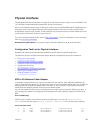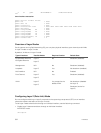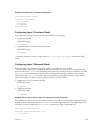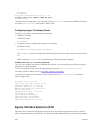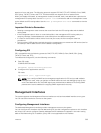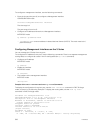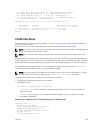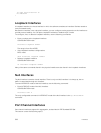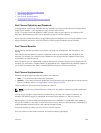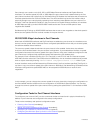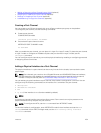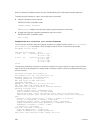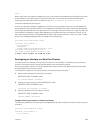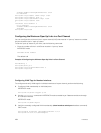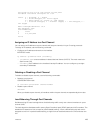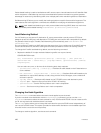
• Port Channel Definition and Standards
• Port Channel Benefits
• Port Channel Implementation
• Configuration Tasks for Port Channel Interfaces
Port Channel Definition and Standards
Link aggregation is defined by IEEE 802.3ad as a method of grouping multiple physical interfaces into a
single logical interface—a link aggregation group (LAG) or port channel.
A LAG is “a group of links that appear to a MAC client as if they were a single link” according to IEEE
802.3ad. In Dell Networking OS, a LAG is referred to as a port channel interface.
A port channel provides redundancy by aggregating physical interfaces into one logical interface. If one
physical interface goes down in the port channel, another physical interface carries the traffic.
Port Channel Benefits
A port channel interface provides many benefits, including easy management, link redundancy, and
sharing.
Port channels are transparent to network configurations and can be modified and managed as one
interface. For example, you configure one IP address for the group and that IP address is used for all
routed traffic on the port channel.
With this feature, you can create larger-capacity interfaces by utilizing a group of lower-speed links. For
example, you can build a 5-Gigabit interface by aggregating five 1-Gigabit Ethernet interfaces together. If
one of the five interfaces fails, traffic is redistributed across the four remaining interfaces.
Port Channel Implementation
Dell Networking OS supports static and dynamic port channels.
• Static — Port channels that are statically configured.
• Dynamic — Port channels that are dynamically configured using the link aggregation control protocol
(LACP). For details, refer to Link Aggregation Control Protocol (LACP).
There are 128 port-channels with 16 members per channel.
NOTE: If you are using either 10G ports or 40G ports, the platform supports up to 16 members per
LAG.
As soon as you configure a port channel, Dell Networking OS treats it like a physical interface. For
example, IEEE 802.1Q tagging is maintained while the physical interface is in the port channel.
Member ports of a LAG are added and programmed into the hardware in a predictable order based on
the port ID, instead of in the order in which the ports come up. With this implementation, load balancing
yields predictable results across line card resets and chassis reloads.
A physical interface can belong to only one port channel at a time.
Each port channel must contain interfaces of the same interface type/speed.
Interfaces
399



